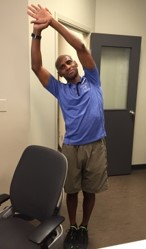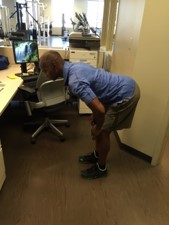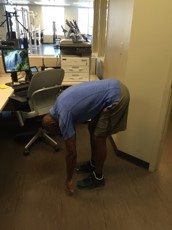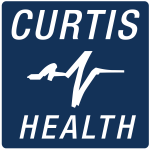We spend so much of our lives sitting. You’ve probably heard the expressions “Sitting is the new smoking” or “Sitting is killing us!” Give a read to the post below written by Curtis staff member, Caroline Chretien. Working with these five practices will rejuvenate your body, reduce stress as well renew your energy…Enjoy!
- Get Moving!
One reason your energy may be dropping at work could be that you’ve been sitting for too long. Try getting up out of your chair and moving around for at least a few minutes every hour. Instead of sending an email, go to your colleague’s office. Schedule a walking meeting. Take the stairs to the restroom a few floors away. Just find a reason to move around and be more active. Engaging in small bursts of physical activity can help to re-energize your body and mind.
- Stretch it out!
Sitting at a desk can create imbalance in the body, overly emphasising certain muscles while “turning off” others. This can contribute to poor posture, back and joint pain, and more. Stretching is one of the most effective ways we can help bring the body into muscular balance. Here are the top 8 desk stretches you can do to awaken your body and prevent muscular issues:
Remember to take a big breath in and then exhale into the stretch. Hold at least 10-20 secs. Only go as far as a mild tension. If the stretch is uncomfortable, ease back or stop stretching.
3. Breath & Relaxation
We can completely change our physiological, mental and emotional state with deeper, more effective breathing and mindful relaxation.
Nostril Breathing: Breathing through the nose as oppose to the mouth warms the breath and has an immediate calming effect as it brings us into our parasympathetic nervous system (our rest and relax system).
Abdominal Breathing: Initiating our breath in the belly uses the largest and lowest regions of the lungs, contributing to more oxygen and vital energy in the body as well as increased lung capacity.
Extended exhales: When it comes to releasing tension, the exhalation is of the most importance. Elongating the exhalation will further sedate the nervous system.
These breathing exercises can be learned in order (the nostril breathing being the most foundational) or they can be combined as a complete breathing practice as the practitioner becomes more experienced.
Guided Relaxation- Guided relaxation helps to replace our busy thoughts with a journey through the body and mind. This could include but is not limited to a conscious relaxing of the body, a positive visualization, or mindset exercises.
- Think a positive thought
Have you ever noticed that when you’re overly busy, stressed, or in a bad mood, that you feel drained of energy? Negative thought patterns can tax our overall energy. On the contrary, positive thoughts can shift our perspective and increase our zest for life. Re-framing a thought about a project, our health, or expressing gratitude for what we have can promote happiness and enthusiasm. Examples could be “I am making a valuable contribution to this project” or “I am in the process of improving my health and fitness. I respect my body” or “I feel fortunate to work with a supportive team”
5. Refuel through hydration and healthy snacks
A decline in energy can be due to low blood sugar or dehydration. Be sure to keep a bottle of water at your desk and take a couple sips every few minutes. Avoid excessive consumption of caffeine which can also contribute to dehydration and fluctuations in energy.
Keep your blood sugar stable by avoiding refined sugar in your diet which can cause sugar crashes. Instead, have healthy snacks on hand at your desk to graze on during the day. Avoid getting to a starving state because by this time your blood sugar is already dropping and you’re more lightly to eat foods on impulse. A drop in blood sugar can also contribute to moodiness and fogginess.
Caroline Chretien is a BCRPA Certified Personal Trainer, Fitness and Yoga Instructor, as well as a Reiki instructor.








